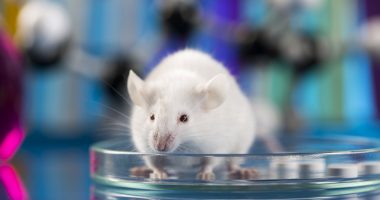MRI technique that measures bone marrow fat may predict SCD severity
Patients with more signs of hemolysis had less fat, study showed

An MRI technique to quantify the amount of fat in the bone marrow of people with sickle cell disease (SCD) may be a promising way to track disease severity, a recent study indicates.
Patients with more signs of red blood cell destruction (hemolysis) in standard blood tests had less fat in their bone marrow, results showed. It’s thought that bone marrow may respond to red blood cell loss by storing less fat and producing more blood cells instead.
The findings suggest this MRI-based approach has “great potential as a noninvasive biomarker contributing to the overall assessment and follow-up of SCD patients,” the researchers wrote in the study, “Quantitative MRI evaluation of bone marrow in sickle cell disease: relationship with haemolysis and clinical severity,” was published in Clinical Radiology.
SCD patients inherit two mutated copies of the HBB gene, resulting in a faulty version of hemoglobin — the protein red blood cells use to carry oxygen — being produced. This causes red blood cells to become misshapen and rigid.
In some patients, both mutated HBB copies produce a version of hemolgobin called hemoglobin S (HbSS subtype), whereas for others, one HBB copy produces hemoglobin S, while the other produces hemoglobin C (HbSC subtype), another faulty form of the protein. HbSS is typically more severe.
Due to these mutations, SCD patients’ red blood cells are particularly prone to hemolysis, meaning patients often have a shortage of red blood cells, or anemia. As a result, changes may occur in the bone marrow — the spongy tissue in bones where blood cells are produced.
There are two types of bone marrow. Red marrow contains blood stem cells that give rise to blood cells, whereas yellow marrow stores fat and contains stem cells that give rise to fat, cartilage, and bone tissue. At birth, all bone marrow is red, but more is converted to yellow with age.
In response to the hemolysis in SCD, red bone marrow in children may persist and yellow bone marrow in adults may convert back to red as a way of compensating for blood cell loss.
Visualizing these changes using various MRI-based approaches may be a way to track SCD severity.
A possible SCD biomarker
In the study, researchers investigated whether a type of MRI analysis called the Dixon technique could serve as a biomarker of hemolysis and SCD disease severity. The Dixon approach determines the fat fraction in the bone marrow (FFDix). A higher FFDix would be associated with more yellow bone marrow.
A total of 48 patients, ages 1o and older, along with 48 healthy volunteers underwent a MRI of the lumbar spine and pelvis at a single center in Brazil from December 2018 to September 2019. Among the patients, 26 had HbSS and 22 had the HbSc disease subtype.
Disease severity was assessed with an online calculator called the Sickle Cell Disease Severity Calculator, which categorizes mild, intermediate, or severe disease.
The analysis determined that 42 patients (87.5%) had mild disease, six (12.5%) had intermediate disease, and none had severe disease.
A group of 19 patients showed signs of particularly high hemolysis, almost exclusively seen with the HbSS disease subtype.
Hemolysis is indicated in blood tests by low hemoglobin and hematocrit (red blood cell volume) and by elevated levels of lactate dehydrogenase (LDH), a marker of tissue damage, and bilirubin, which indicates red blood cells are being destroyed faster than they can be cleared by the liver.
Nearly half the patients (45.8%) were being treated with hydroxyurea, a medication to prevent pain crises and reduce the need for blood transfusions.
A MRI revealed SCD patients exhibited qualitative signs of “hematopoietically active” bone marrow more often than healthy people, reflecting a high production of red blood cells — a sign of red marrow.
Consistently, SCD patients, particularly those with the HbSS disease subtype, had significantly lower FFDix values across evaluated regions, reflecting a lower prevalence of fat, or yellow marrow.
HbSS patients on hydroxyurea had higher FFDix values than those not using the medication, “which may be indicative of a good response to treatment,” the researchers wrote.
In most regions, the patients determined to have a high degree of hemolysis in blood tests had lower FFDix values than those without high hemolysis.
Consistently, lower FFDix values were correlated with lower hematocrit and hemoglobin levels in blood tests and higher LDH and total bilirubin. FFDix values showed good accuracy at predicting high hemolysis, outperforming the online calculator.
Evaluated regions with the highest predictive accuracy included the iliac region of the pelvis, the femoral heads in the upper thigh, and the lumbar vertebrae in the lower spine.







